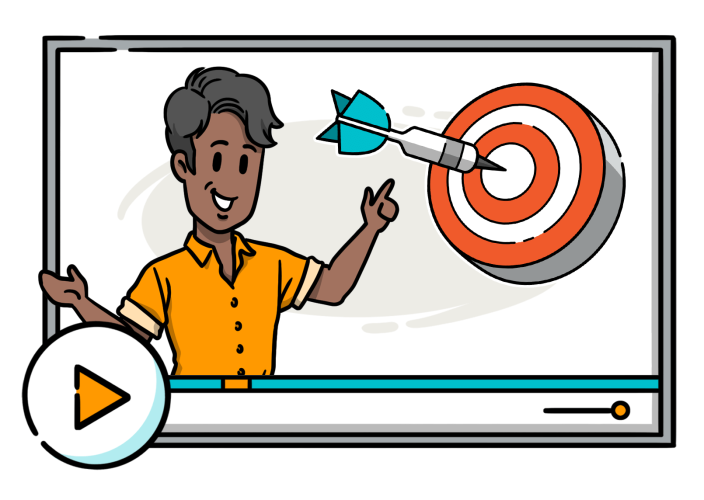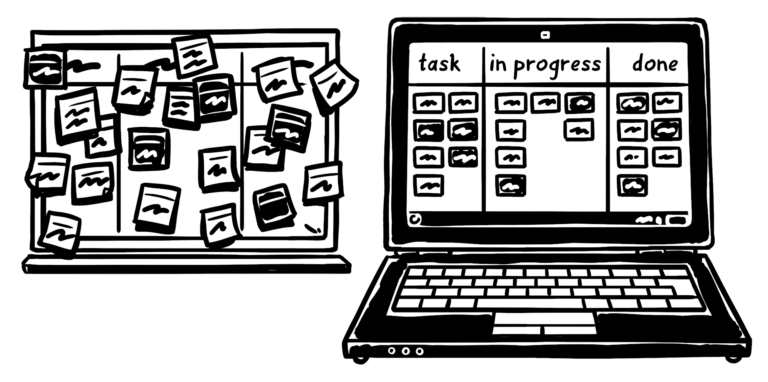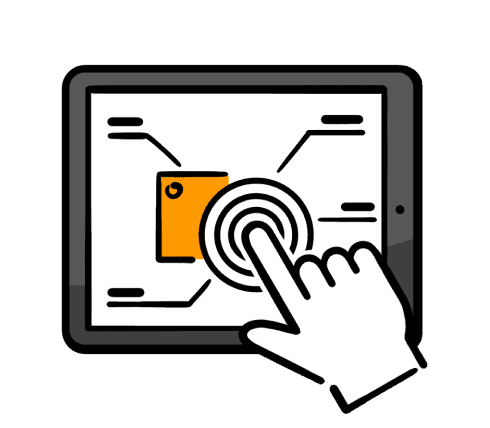A guide to designing engaging and effective eLearning courses
Written by Baidhurya Mani | 29th September 2023

Thanks to technological advancements, anyone can create and publish an eLearning course. The challenge lies in designing one that captures your audience’s attention and retains it. You also want an online course that helps learners achieve their learning goals.
How do you do all these things?
In this article, we reveal six tips you should follow during the design phase to set your course up for success. Let’s get started!
How do you do all these things?
In this article, we reveal six tips you should follow during the design phase to set your course up for success. Let’s get started!
1. Know your audience
As part of your course design process, you need to know your target audience. If you’re unsure about who your learners are, you’ll find it challenging to create a course that meets their needs.
Let’s say that your audience is beginners in PPC advertising. You’ll know you shouldn’t bombard them with unfamiliar jargon as they take your course.
But that’s not all. Knowing your audience also helps you choose the right content delivery methods. We’ll talk more about this later.
How do you know your audience then? Among other things, you need to ask yourself the following questions:
Let’s say that your audience is beginners in PPC advertising. You’ll know you shouldn’t bombard them with unfamiliar jargon as they take your course.
But that’s not all. Knowing your audience also helps you choose the right content delivery methods. We’ll talk more about this later.
How do you know your audience then? Among other things, you need to ask yourself the following questions:
- Where are they from geographically?
- What’s their average age?
- What are their capabilities?
- Are they familiar with the fundamentals of what you’re teaching?
- Do they have a preferred learning style?
You can get the answers to some of those questions if you analyze your website’s data. An essential tool like Google Analytics will show you where your site’s visitors come from, the content that resonates with them the most, etc.
To get the answers to the other questions, why not ask your audience directly? You can send them surveys via email. Tell them the answers to the survey can help you craft an online course that’s tailored to their needs.

2. Define learning objectives
Let’s assume you already know who your audience is.
Now it’s time to define your learning objectives. A learning objective is a lesson’s “why.” From your audience’s point of view, it’s what they stand to gain from every lesson in a course. For this reason, you’ll sometimes hear learning objectives referred to as learning outcomes.
Online courses need learning objectives for a number of reasons.
To come up with learning objectives, go back to your research and survey results. See what your target audience wants to learn. Then formulate sentences based on what you find. Go for measurable verbs like “identify” or “create” instead of vague ones like “understand” and “know.” Your final learning objectives should have four components: audience, condition, behavior, and degree of mastery.
Here’s an example of a great learning objective: By the end of this course (condition), learners (audience) will be able to identify (behavior) at least three of the five best copywriting techniques (degree of mastery).
One learning objective doesn’t suffice, of course. To formulate your other learning objectives, just repeat the same process.
Now it’s time to define your learning objectives. A learning objective is a lesson’s “why.” From your audience’s point of view, it’s what they stand to gain from every lesson in a course. For this reason, you’ll sometimes hear learning objectives referred to as learning outcomes.
Online courses need learning objectives for a number of reasons.
-
They’re motivational:
They encourage learners to focus. If you specify the ability they’ll acquire upon completion of a lesson or module, they’ll see the value in participating attentively. -
They prevent misunderstandings:
With learning objectives spelled out, you and your audience will always be on the same page when it comes to what they’ll gain from your course. -
They help you keep your course focused:
You’ll find it easier to identify individual lessons that don’t add any value and discard them accordingly.
To come up with learning objectives, go back to your research and survey results. See what your target audience wants to learn. Then formulate sentences based on what you find. Go for measurable verbs like “identify” or “create” instead of vague ones like “understand” and “know.” Your final learning objectives should have four components: audience, condition, behavior, and degree of mastery.
Here’s an example of a great learning objective: By the end of this course (condition), learners (audience) will be able to identify (behavior) at least three of the five best copywriting techniques (degree of mastery).
One learning objective doesn’t suffice, of course. To formulate your other learning objectives, just repeat the same process.
3. Organize course content
If you want to create eLearning courses that engage learners, you’ll need to organize and structure your content in a logical manner. This organization process entails creating a course outline. You want to break the overall course into standalone learning modules.
Organizing your digital learning content provides several benefits.
First, it helps you understand how your course will flow. When you create a course outline, you can put yourself in your audience’s shoes and see whether each lesson builds on the last in a logical progression. Being able to empathize with your learners in this way ensures that your course is easy to follow. You can expect effective learning content.
Second, you can break up your course into manageable chunks of content. It makes the content creation process easier. Plus, you’ll make it easier for learners to understand what you’re teaching them. Bite-sized learning or learning at scale, as it is called, can boost retention rates anywhere between 25% to 60%. Completion rates are also high, ranging from 70% to 80%. [1]
Third, it gives you a bird’s eye view of your learning course. When you organize your content, you’ll find it easier to decide what to include and leave out. You can tell whether you’ve thoroughly covered everything your audience needs to know.
To organize your course’s content and structure, begin by listing all the topics your course/training program needs to cover. You can use the learning objectives you defined previously as a guide and source of inspiration.
Once you’re done, arrange them in order of simple to complex. Then, identify the subtopics within these primary topics and establish a hierarchical structure.
Organizing your digital learning content provides several benefits.
First, it helps you understand how your course will flow. When you create a course outline, you can put yourself in your audience’s shoes and see whether each lesson builds on the last in a logical progression. Being able to empathize with your learners in this way ensures that your course is easy to follow. You can expect effective learning content.
Second, you can break up your course into manageable chunks of content. It makes the content creation process easier. Plus, you’ll make it easier for learners to understand what you’re teaching them. Bite-sized learning or learning at scale, as it is called, can boost retention rates anywhere between 25% to 60%. Completion rates are also high, ranging from 70% to 80%. [1]
Third, it gives you a bird’s eye view of your learning course. When you organize your content, you’ll find it easier to decide what to include and leave out. You can tell whether you’ve thoroughly covered everything your audience needs to know.
To organize your course’s content and structure, begin by listing all the topics your course/training program needs to cover. You can use the learning objectives you defined previously as a guide and source of inspiration.
Once you’re done, arrange them in order of simple to complex. Then, identify the subtopics within these primary topics and establish a hierarchical structure.

4. Choose appropriate content delivery methods
A content delivery method refers to the way an instructor conveys their course’s contents to their learners. Online learning has evolved to the point where you have several content delivery methods at your disposal when you create eLearning courses. The most common ones include:
When creating eLearning courses, you’ll need to decide appropriate delivery methods that aid understanding and boost learner engagement. It’s important to choose the right delivery method; there’s no one-size-fits-all approach to eLearning.
The topics you’re teaching will influence your choice.
For example, when designing an e-Learning course that requires demonstrations, you’ll need to use video. The good news is, there are primary tools you can use for this. Simpleshow’s videomaker, for instance, makes it easy for you to create videos that introduce complex topics. With Simpleshow, you can also create explainer videos that combine storytelling techniques with simple visuals.
When choosing your content delivery method, determine your audience’s preferences, too. So, you’ll need to go back to your research and survey results.
You don’t need to use just one type of content delivery method when you create eLearning courses. Online course builders now support different content types. Apart from videos, the Thinkific platform, for instance, supports PDFs, audio files, live sessions, and HTML5. You can add different content types to each lesson, too. Plus, many online course builders allow for responsive designs. That means the content will look good on many device types. This allows you to accommodate learners who prefer to learn from their mobile devices.
- Video
- Audio
- Screencasting
- Text; and
- Slides
When creating eLearning courses, you’ll need to decide appropriate delivery methods that aid understanding and boost learner engagement. It’s important to choose the right delivery method; there’s no one-size-fits-all approach to eLearning.
The topics you’re teaching will influence your choice.
For example, when designing an e-Learning course that requires demonstrations, you’ll need to use video. The good news is, there are primary tools you can use for this. Simpleshow’s videomaker, for instance, makes it easy for you to create videos that introduce complex topics. With Simpleshow, you can also create explainer videos that combine storytelling techniques with simple visuals.
When choosing your content delivery method, determine your audience’s preferences, too. So, you’ll need to go back to your research and survey results.
You don’t need to use just one type of content delivery method when you create eLearning courses. Online course builders now support different content types. Apart from videos, the Thinkific platform, for instance, supports PDFs, audio files, live sessions, and HTML5. You can add different content types to each lesson, too. Plus, many online course builders allow for responsive designs. That means the content will look good on many device types. This allows you to accommodate learners who prefer to learn from their mobile devices.
5. Incorporate Interactive Elements
According to research [2], active learning enhances memory and ensures control. Learners who are given some control over the information they’re absorbing are more likely to retain it than those who aren’t given that control.
That means you need to keep your learners engaged throughout your course. When you include interactive elements in your course, you can kill two birds with one stone. You can enrich the online learning experience and ensure your learners retain the knowledge they acquire.
There are numerous ways you can make your audience’s learning process more interactive. In your course plan, include:
Some online course platforms also allow for Q&A calls. Why not incorporate chats, too? This is a great way for your learners to discuss amongst themselves. With this strategy, you won’t just help them learn from their peers. You’ll also help them build and nurture relationships amongst themselves, thereby strengthening your online community.
That means you need to keep your learners engaged throughout your course. When you include interactive elements in your course, you can kill two birds with one stone. You can enrich the online learning experience and ensure your learners retain the knowledge they acquire.
There are numerous ways you can make your audience’s learning process more interactive. In your course plan, include:
- Gamification elements:
For instance, resolve to reward your learning audience’s efforts with points and badges - Pauses mid-lesson:
These will encourage your audience members to engage in short interactive exercises like reviewing your videos
Some online course platforms also allow for Q&A calls. Why not incorporate chats, too? This is a great way for your learners to discuss amongst themselves. With this strategy, you won’t just help them learn from their peers. You’ll also help them build and nurture relationships amongst themselves, thereby strengthening your online community.

6. Include Assessments
No online training is complete without assessments. You’ll do well to include them in your course plan when you create eLearning courses. You don’t have to wait until the end of the course to evaluate your learners. You can end each module with an assessment of learner progress.
Many online course builders come with advanced features that help you in this assessment. Kajabi, for instance, allows eLearning course creators to make their own quizzes. The quizzes can come in different forms, too:
Plan when you’ll give your learners other assessment types like assignments as well. You should resolve to provide each learner some feedback after submission. Praise learners that do well and encourage the ones that struggle to keep trying. You can even grade their papers. This will give them an idea of the subjects they need to work on.
Don’t leave your hardworking learners empty-handed. In your course plan, specify how you’ll give out certificates once they complete your course. The certificate won’t just serve as their ultimate reward for studying hard. It will also serve as proof to their future employers that they have the necessary skills and knowledge for the job they’re applying for.
Now you have an effective and engaging eLearning course! Make sure you leverage different strategies to promote your course for the best results. Consider landing pages or one-pagers. Use social media and email marketing. You can even engage the PR services of agencies to help you gain some traditional media coverage.
Many online course builders come with advanced features that help you in this assessment. Kajabi, for instance, allows eLearning course creators to make their own quizzes. The quizzes can come in different forms, too:
- Multiple choice
- Checkboxes
- Short answer
- File upload (question type)
Plan when you’ll give your learners other assessment types like assignments as well. You should resolve to provide each learner some feedback after submission. Praise learners that do well and encourage the ones that struggle to keep trying. You can even grade their papers. This will give them an idea of the subjects they need to work on.
Don’t leave your hardworking learners empty-handed. In your course plan, specify how you’ll give out certificates once they complete your course. The certificate won’t just serve as their ultimate reward for studying hard. It will also serve as proof to their future employers that they have the necessary skills and knowledge for the job they’re applying for.
Now you have an effective and engaging eLearning course! Make sure you leverage different strategies to promote your course for the best results. Consider landing pages or one-pagers. Use social media and email marketing. You can even engage the PR services of agencies to help you gain some traditional media coverage.
In closing
Designing an effective and engaging eLearning course is hard but not impossible. All you need to do is be strategic in your approach.
Begin by knowing your audience and then setting learning objectives. You also need to organize your learning content logically. Based on your audience research and survey results, choose the appropriate content delivery methods. Make sure you also incorporate interactivity into the course and assess your learners where possible.
If you follow these tips, you won’t just ensure interactive courses. You’ll also equip your learners with the skills and knowledge they came to you for in the first place.
Begin by knowing your audience and then setting learning objectives. You also need to organize your learning content logically. Based on your audience research and survey results, choose the appropriate content delivery methods. Make sure you also incorporate interactivity into the course and assess your learners where possible.
If you follow these tips, you won’t just ensure interactive courses. You’ll also equip your learners with the skills and knowledge they came to you for in the first place.
Author's Bio

Baidhurya Mani is the founder of SellCoursesOnline.com. He regularly shares tips, tools, and strategies to help creators and entrepreneurs build a successful online course business.
